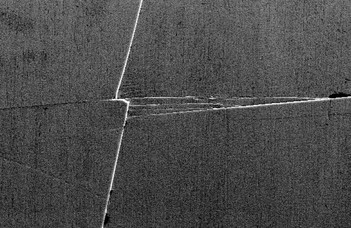Amorphous materials

Amorphous alloys, also known as metal glasses, are a new family of structural materials. In addition to their metallic components and properties, their structure is significantly different from the structure of crystalline metals used in everyday life. Due to the lack of long-term atomic arrangement, their structure most closely resembles to that of conventional glasses with an amorphous structure. However, high atomic cohesion, metallic structure and mobile structural defects are characteristic of the components of metal glasses, therefore their exhibits excellent mechanical properties, their strength approximates the theoretical strength of materials.
Amorphous alloys are in thermodynamically metastable state. Metallic glasses are usually created from liquid phase by fast cooling by freezing the liquid state at the glass transition temperature. Some amorphous alloys can also be produced in solid phase under the influence of severe plastic deformation (e.g. ball milling). Due to their metastability, metallic materials with an amorphous structure are inhomogenized to various external effects and then recrystallize in several stages. Thus, for example, special metastable crystalline phases cannot be created in the glass structure by equilibrium methods.
In our research, we investigate the transformation of metastable amorphous structure, the behavior and interaction of shear bands and related atomic processes, using both experimental and theoretical methods.

